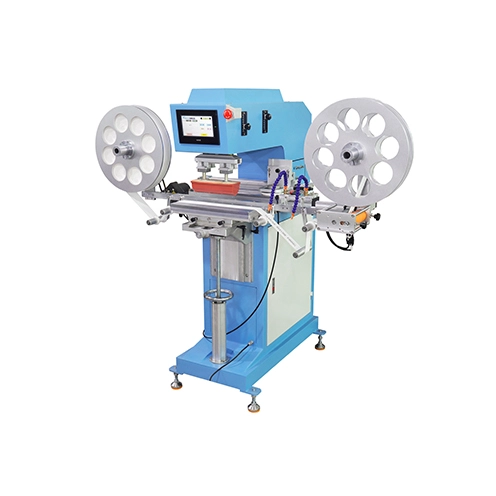Need simple, cost-effective printing on varied surfaces? One-color pad printing machines solve basic marking needs with unmatched versatility across industries. These reliable workhorses transfer crisp logos, text, and designs onto everything from pens to medical devices.
One-color pad printers use a silicone pad to transfer ink from an etched plate onto irregular surfaces, making them ideal for printing single-color designs on 3D objects where screen printing or digital methods fail.
While limited to monochrome applications, these machines excel at quick, high-quality imprinting. Let's examine why they remain essential in modern manufacturing.
Frustrated by inconsistent hand-stamping or expensive multi-color setups? This simple solution delivers professional results with minimal training.
A 1 color pad printer consists of three core components:
Ink Cup: Holds and floods the etching plate
Cliché Plate: Laser-etched metal plate containing the design
Silicone Pad: Transfers ink from plate to product
The process works like this:
Ink fills the etched pattern on the plate
The silicone pad presses onto the plate, picking up ink
The pad then stamps the design onto the product
The cycle repeats every 5-10 seconds

Still using manual stamping or labels? Here's why manufacturers have used pad printing for decades:
One-color pad printers from leadding pad printer manufacturers like haover achieve 98-100% uptime in production environments while offering the lowest cost-per-print of any industrial printing method.
Key benefits you can't ignore:
Surface Flexibility
Prints on concave/convex surfaces
Works on textured materials
Handles small (5mm) to large (300mm) areas
Operational Efficiency
Change designs in under 5 minutes
Minimal ink waste
No drying time between prints
Cost Effectiveness
60% cheaper than laser marking
40% lower operating costs than screen printing
No consumables beyond ink
Case Example: A pen manufacturer increased daily output from 800 to 2,500 units after switching from manual stamping to automated one-color pad printing.
Think pad printing only suits simple items? These industries rely on one-color models daily:
Company logos on pens/mugs
Event dates on drinkware
Serial numbers on giveaways
Part numbers on machinery
Safety warnings on tools
Barcodes on plastic housings
Measurement scales
Lot codes on syringes
Single-color brand markings
Gearshift pattern indicators
Fluid level markings
Connector identification
Confused by technical jargon? Focus on these four essentials:
| Consideration | Why It Matters | Ideal Specification |
|---|---|---|
| Print Area | Determines maximum image size | Minimum 50x50mm for most applications |
| Pad Type | Affects ink transfer quality | Shore A 10-40 hardness silicone |
| Automation Level | Impacts production speed | Semi-automatic for under 1,000 prints/day |
| Ink Compatibility | Ensures material adhesion | Test with your specific substrate first |
Deciding between simplicity and versatility? Here's how they compare:
Cost
One-color: $3,000-$10,000
Two-color: $15,000-$40,000
Speed
One-color: 600-1,200 prints/hour
Two-color: 300-800 prints/hour
Setup Complexity
One-color: 2-5 minute changeovers
Two-color: 10-20 minute color alignment
Maintenance
One-color: Weekly cleaning
Two-color: Daily registration checks
One-color pad printers from haover remain the most economical solution for consistent monochrome printing on diverse materials and shapes. Their simplicity and reliability make them indispensable tools for manufacturers worldwide.


